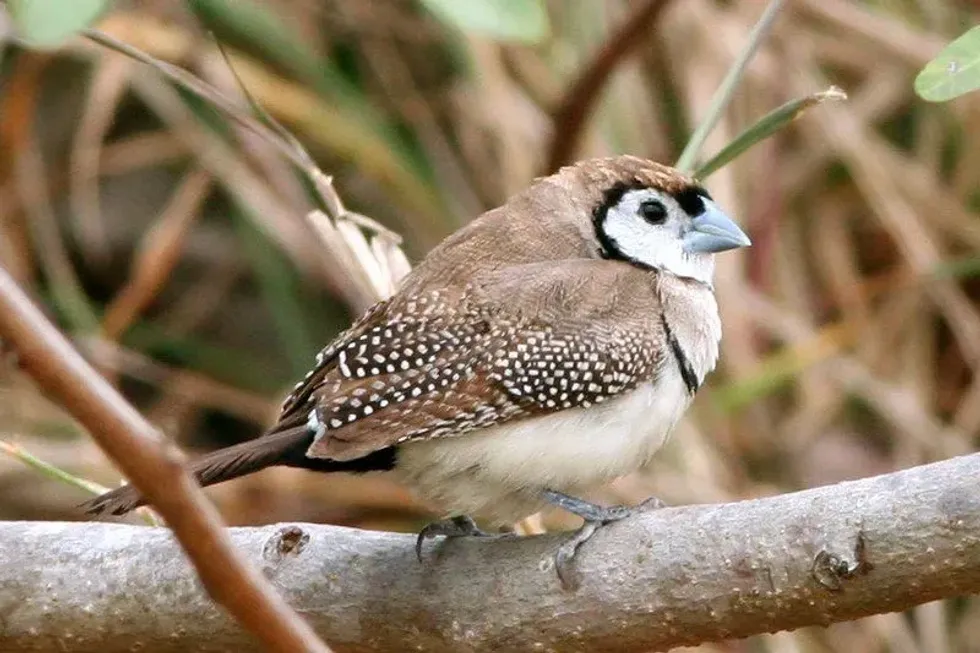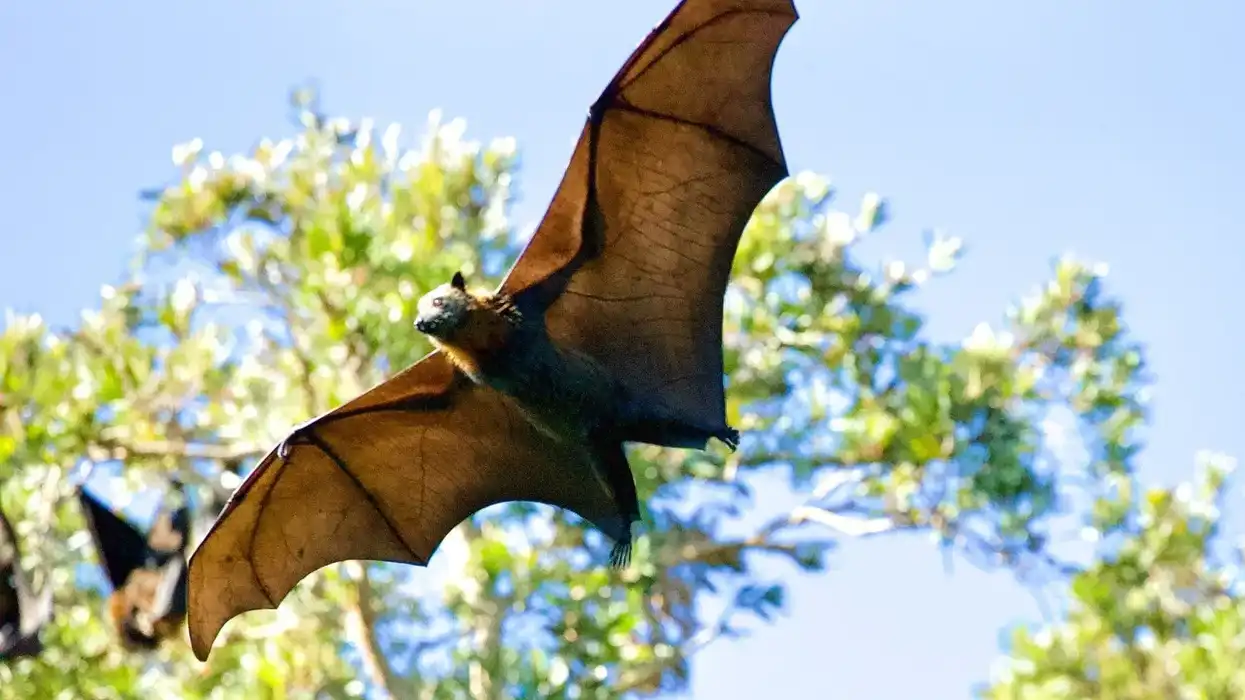When you hear loud bird calls, search in your backyard. If you are lucky, you may find double-barred finches. For better identification of this bird species, search this article for its physical description. To know more answers to your questions about the double-barred finch, continue reading this article.
A double-barred finch (Taeniopygia bichenovii) is one of the long-tailed grass finches. It is sometimes known as owl finch because of the black ring of feathers around the face.
A double-barred finch has two subspecies like Taeniopygia bichenovii bichenovii and Taeniopygia bichenovii annulosa. The first subspecies has a white rump and is found in eastern Australia. Another subspecies, Taeniopygia bichenovii annulosa, has a black rump and is found in northern Australia.
The word double-barred is attributed to this species as it has two black bands to separate its throat and underparts. The double-barred finches are not migratory birds, and they do not travel far.
If you want more information on double-barred finch, take time to read this article, and if you are a bird lover, you may consider reading our articles on the Hawaiian crow facts and kagu facts.
Double Barred Interesting Facts
What type of animal is a double barred?
A double-barred finch is a bird species.
What class of animal does a double barred belong to?
The double-barred finches are birds that belong to the class Aves.
How many double barreds are there in the world?
The global population of the double-barred finches is not quantified, but the species is considered to be common or locally common. The following are the population densities recorded across their distribution range in northern and eastern Australia: 0.24 to 0.6 birds per hectare (0.0024- 0.006 sq.
km) in Howards Peninsula; 0.49 to 2.55 birds per hectare (0.0049- 0.0255 sq. km) in Queensland near Tallegalla; 0.08 birds per hectare (0.0008 sq. km) in New South Wales near Armidale: 0.2 birds per hectare (0.002 sq.
km) in Hawkesbury; 0.07 to 0.67 birds per hectare (0.0007- 0.0067 sq. km) in Canberra.
Where does a double barred live?
Double-barred finch birds are found in grassy woodland and scrubland, vegetation along watercourses, open woodland and forest edge, cane fields, wastelands, roadsides, parks, and gardens.
What is a double barred habitat?
The preferred habitat of a double-barred finch bird is dry savannah, dry grassland, and shrubland in the north and eastern Australia. It also prefers to stay close to water bodies.
Who does double barred live with?
The double-barred finches search for food alone, in pairs, and small flocks up to 12-14 individuals. They are often found moving around in mixed flocks with other finches, primarily diamond firetail and the Australian zebra finch, the red-browed finch, and the plum-headed finch.
How long does a double barred live?
The estimated lifespan of a double-barred finch bird is around seven years.
How do they reproduce?
The breeding season of a double-barred finch bird is known to vary across its distribution range. For example, in northern Australia, the breeding season is the second half of the rainy season, while in Queensland, it breeds in all months.
Also, in New South Wales, the breeding season is from July to November or December.
A double-barred finch bird builds a round nest made from the grass with a side entrance and a short tunnel of fewer than 2 in (5.08 cm) wide. Its nest is lined with fine grass or feathers and often placed at 3.3-16.5 ft (1.006-5.03 m) above the ground in pandanus or holes in a tree.
Sometimes, the nests are placed in the eaves of a building, often close to a paper wasps' nest.
The female bird lays three to six eggs. After the incubation period of 11 -12 days, the hatchlings are born.
The hatchlings have a white face with a black border, a pinkish-white palate with three laterally elongated black spots, two small black arcs open towards the rear, two black spots on the tongue, and a black spot below, and a black crescent.
During the nestling period of 19 days, feeding of juveniles is done by both parents. At the age of 21 days, the juveniles become independent and start feeding on their own.
What is their conservation status?
As per the IUCN Red List classification, the conservation status of a double-barred finch species is Least Concern.
Double Barred Fun Facts
What does double barred look like?
A double-barred finch is a long munia-like bird with a white face with a black border and a brown throat. It has a white rump and a black tail with white spots and bars on wing-coverts and inner flight feathers.
Its belly and flanks are creamy white. Its breast appears greyish-white with fine grey bars at the side and a thin black band across the lower breast. The sexes are similar, but the juveniles look like dull variants of adults with brownish upperparts.
How cute are they?
Double-barred finches are smaller than the average length of a human palm. Their owl-like face with different colors around the body makes them cute. Even juveniles look cute.
How do they communicate?
The double-barred finches make different loud sounds known as calls to communicate with another finch in the group. Usually, they make a high-pitched tat-tat as a close contact call and a longer tiaat-tiaat similar to the sound made by a toy trumpet or a plaintive twoooo-twoooo as a distant contact call.
In addition, they usually sing a series of trills and buzzy contact calls.
How big is a double barred?
A double-barred finch grows to be around 3.9-4.3 in (10 to 11 cm) long. It is one of the smallest bird species in the Estrildidae family.
How fast can a double barred run?
Research references related to double-barred finch are limited, and hence, the information related to its speed is unknown. Finches might hop instead of run, as the majority of birds prefer to hop.
How much does a double barred weigh?
A double-barred finch weighs around 0.25-0.42 oz (7-12 g). It is one of the lightest bird species in the Estrildidae family.
What are the male and female names of the species?
A double-barred finch male is referred to as cock, and the female is a hen.
What would you call a baby double barred?
The baby of a double-barred finch is referred to as a chick. Sometimes, you can call it as a hatchling or a juvenile.
What do they eat?
Double-barred finches primarily prey on seeds of grasses and herbs. However, sometimes they may eat insects like grasshopper and their larvae in the breeding season.
Are they poisonous?
The double-barred finch bird species do not carry any venom in their mucus. So, they can be considered non-poisonous.
Would they make a good pet?
Double-barred finches are friendly, socially active, and peaceful birds. But they are free-flying birds with large cage requirements. So, they might take time to adjust to human habitats.
These finches can be domesticated without any issues if their cage requirements and feeding needs are satisfied. However, if you plan to keep them as pets, it is better to keep two birds instead of a single bird.
Did you know...
Finches are poorly adapted to cold temperatures. Therefore, it is always better to provide heated shelters in captive breeding or keep the birds inside the house during winter.
Finches exhibit unique behavior, nestlings beg with their heads down to one side.
Are they predators?
No, double-barred finches are not predators. They are friendly and peaceful birds.
How high can they fly?
Research references on the information related to the flight heights of double-barred finches are unavailable. However, based on their physical description, it is presumed that they are not meant to fly far and high.
Here at Kidadl, we have carefully created lots of interesting family-friendly animal facts for everyone to discover! For more relatable content, check out these yellow billed cuckoo facts and house finch facts pages.
You can even occupy yourself at home by coloring in one of our free printable double barred coloring pages.









